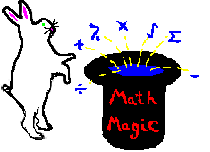

A. Coins are a good beginning for learning probability since you are faced with only 2 choices: heads or tails.
B. Below is a diagram of a coin after it is tossed 3 times. This will be used as an example to explain how to use probability in relation to coins:

C. There are several things that we can gather from looking at this diagram.
1. The number of possible combinations after 3 flips is 23 or 8. In general, the number of possible combinations after n flips is 2n.
2. The probability of getting heads or tails on each successive flip is 1/2.
3. The probability of getting all heads (or all tails) after 3 flips is 1/23 which is 1/8. In general, the probability of getting all heads (or all tails) after n flips is 1/2n.
4. A more complicated concept is how to determine the probability of getting 2 heads and 1 tails (or 2 tails and 1 heads). From counting we know the answer is 3/8, but what if we had more than 3 flips? In general, we can calculate the probability of getting x heads and y tails after r flips by using the following formula:
P = C(r,x) or C(r,y)
2r 2r
D. Let's look at some examples. You will need to be familiar with combinations.
Ex [1] A coin is flipped 5 times. Find the probability of getting 3 heads and 2 tails.
First, we know the denominator is 25 = 32.
To find the numerator, we need to calculate C(5,3) [or C(5,2)].
C(5,3) = 10.
The answer is 10/32 = 5/16.
Ex [2] A coin is tossed 4 times. Find the probability of getting at least 2 heads.
This example is a little harder as we can have 2 heads and 2 tails, 3 heads and 1 tail, or 4 heads and no tails.
This means we will have to calculate each probability and add it together.
The probability of each one successively is: C(4,2) + C(4,3) + C(4,4)/24.
This is 6+4+1/16 = 11/16.
The answer is 11/16.